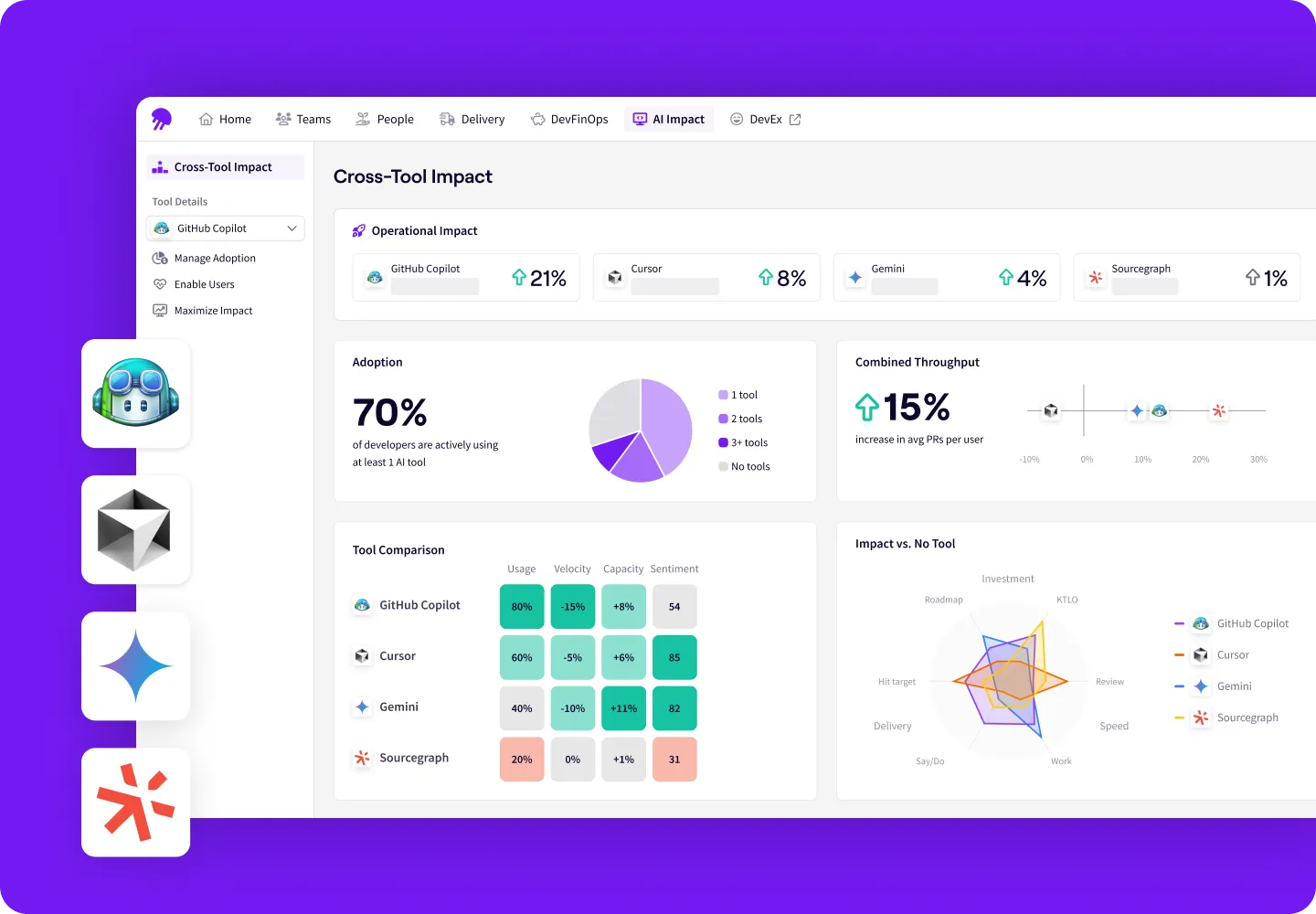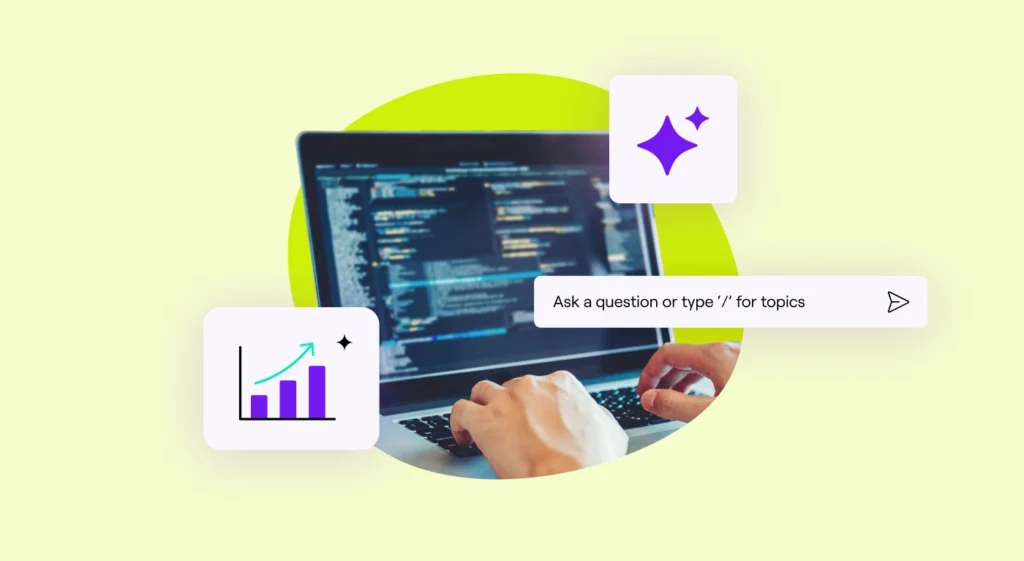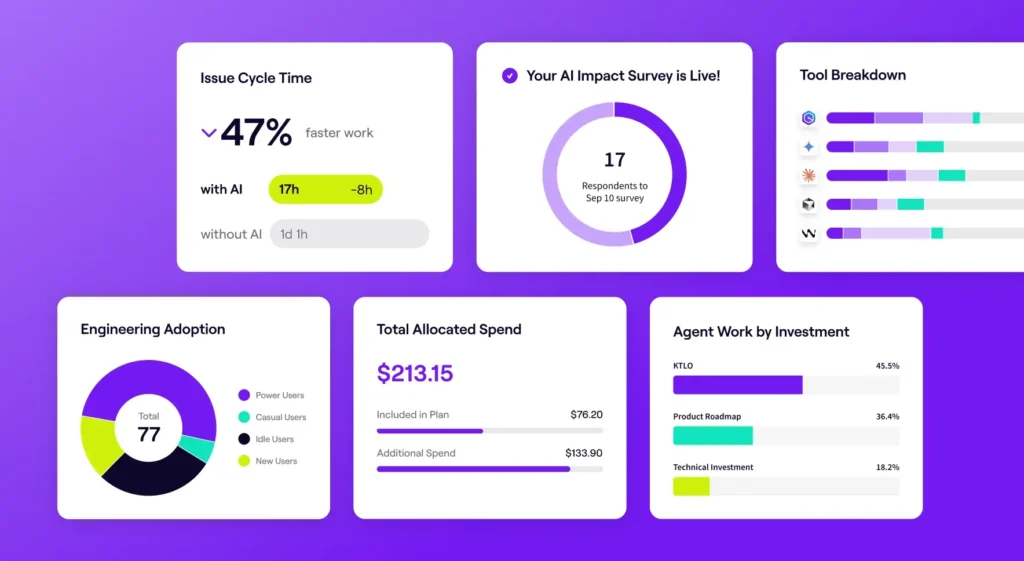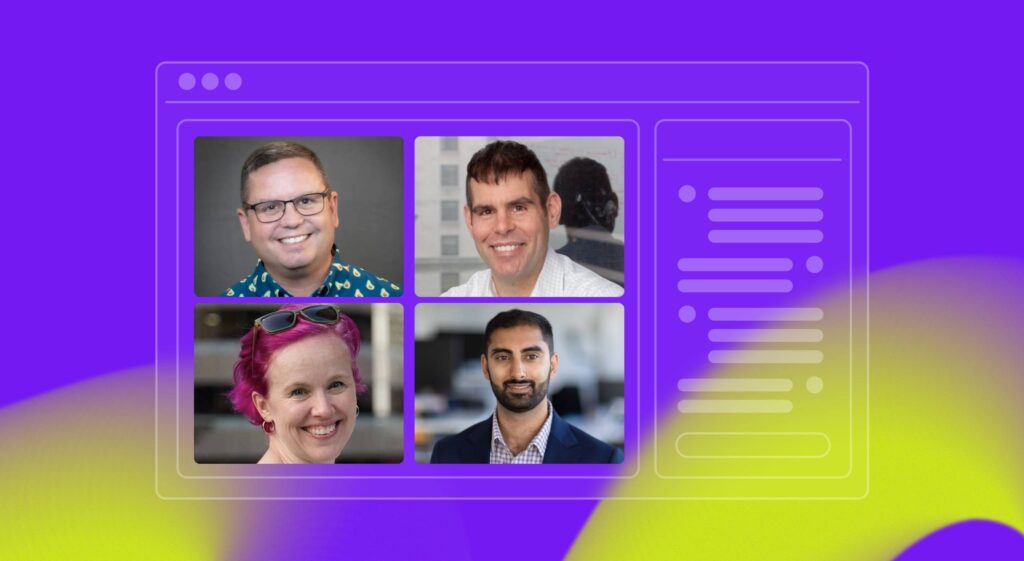What does it actually mean to build a growth mindset in the AI era? Luke Stevens, Director of Engineering at Jellyfish, brought together Pat Jenakanandhini, Chief Product & Technology Officer at Tripleseat and Adam Ferrari, Advisor at Jellyfish, to find out.
Together with a small group of Jellyfish customers and prospects, they discussed tactical strategies, philosophical shifts, and how to embrace AI without turning off your team.
You can catch the full Coffee Chat replay here or follow along below.
Encouraging AI Experimentation
Encouraging AI Experimentation
Engineering leaders are being asked by their boards and CEOs to more broadly encourage AI usage in the hopes of seeing outsized productivity gains. But experienced engineering leaders know that pushing adoption in the wrong way risks creating a culture that can quickly grow toxic.
“You can’t just mandate usage,” said Pat. That’s why Tripleseat is experimenting with making AI usage part of the criteria for promotions – not as a stick, but as a carrot. “We want people who are willing to try new tools. It’s not about punishing those who don’t, but we need a team that’s intellectually curious,” he said.
To further encourage experimentation, Tripleseat doesn’t mandate what AI coding tools to use, but encourages team members to try a range of options on their own in addition to the suite of tools made available org-wide. “The reality is this stuff is moving so fast, there’s new things coming out almost every day, and I want the team to be able to try these things out and see if it works,” Pat added.
Coping with the Rapidly Changing AI Ecosystem
Coping with the Rapidly Changing AI Ecosystem
From Claude Code’s rapid updates to the rising utility of tools like Cursor and Copilot, the landscape is shifting weekly. “My biggest fear is that if we don’t move quickly, we’ll wake up three years from now and realize we’ve been left behind,” Pat added.
The ways in which R&D and corporate leaders are responding to these changes varies, from grassroots adopters to hardline enforcers like Duolingo and Shopify. For Tripleseat, their desire to move quickly and experiment comes from a fear of stagnation. In other words, the companies that don’t move fast may not move at all. That’s why Pat’s team is continually experimenting and evolving their AI adoption and usage strategies.
Change Management for the AI Age
Change Management for the AI Age
But how do you actually adopt these new tools? It might be easy to play around with the newest tool, but driving adoption and actual change management is hard work. Strategies can range from a shared Miro board to aggregate AI usage tips, best practices and latest developments to Tripleseat’s more formalized rubric system. “We ask people to pick just one use case – like code generation or documentation – and baseline it.” Then they measure if AI improves it.
Other engineering leaders encourage exploration within defined frameworks to avoid falling into shiny-tool syndrome. “We don’t need to test everything. But we need a way to evaluate what we do test.”

Measure the impact of your AI coding tools
AI tools alone won’t transform your org – Jellyfish shows you what’s working, what’s not, and how to build high-performing teams that know how to use AI the right way.
Get a DemoFocusing AI adoption on developers alone may create downstream bottlenecks. Improving code generation doesn’t help if the rest of the pipeline – QA, product, design, etc., – isn’t also on board. To help, consider mapping out AI tools across the entire software delivery lifecycle.
Legacy Systems and Leadership Realities
Legacy Systems and Leadership Realities
The idea that AI will dramatically shrink teams overnight is more myth than reality – at least so far. Instead, most engineering organizations are running legacy systems that are not yet ready for AI-driven rebuilds. Pat explained, “98% of the world’s software is legacy. People don’t understand how hard it is to change that.”
Leadership’s expectations, however, don’t always align. A disconnect between what AI can deliver and what CEOs want out of it seems to persist across the board. These business leaders are looking for AI-powered transformation overnight – without understanding the limits of current tools or the realities of deeply embedded systems.
What Should Leaders Do?
What Should Leaders Do?
So what should leaders focus on in this rapidly evolving era of AI?
- Create space for experimentation: Carve out hackathon-style days. Let people play.
- Align on metrics: Track adoption, yes – but also efficacy. Look at cycle times, defect rates, and actual feature delivery, not just AI usage.
- Invest in junior developers: If AI takes over the grunt work, how will new engineers build the foundation for deeper expertise? Companies need to intentionally grow the next generation.
- Foster a culture of curiosity: Encourage questions like, “What couldn’t we do before that AI might make possible?” rather than just, “How can I do the same thing faster?”
Looking Forward
Looking Forward
Growth in the age of AI isn’t just about efficiency. It’s about how engineering leaders enable the developers who use these tools, how we protect workplace culture while doing so, and how we balance risk with rigor. The next era of engineering will be shaped not just by technology, but by the curiosity of those who use it.
About the author

Hannah McKeen is Senior Customer Marketing Manager at Jellyfish.





